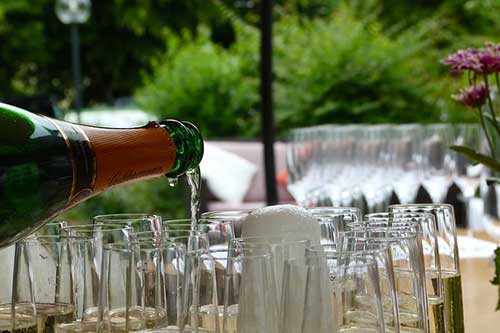Sure, you like wine, and maybe you break out a few bottles over dinner or with your mates, but do you know how to serve it like a pro? We’ve talked about wines like port before, but we haven’t covered the fact that a lot of pageantry goes into wine service in nice restaurants. The truth is that although there is a method to serving wine, it all boils down to knowing a few simple rules.

Keep it Cool: Temperature Matters
Wine contains a wealth of different flavour compounds, most of which taste their best at certain temperatures. Keeping wine cooler than room temperature cuts back on alcohol’s ‘bite’, preventing it from overwhelming your tongue and making it easier to identify all the flavours.
The exact temperature that you want depends on the kind of wine you’re serving. Red wines work best chilled at slightly below room temperature, while whites should be served much cooler. The general rule is that the drier and darker the wine, the higher the temperature you should serve it at. To be more exact:
- Red wines should be served between 18°C and 12°C
- Dry whites should be served between 12°C and 9°C
- Sweet or sparkling whites should be served between 9°C and 6°C
Choosing the Right Glasses
There are quite a few different general types of wine glasses, and the rules about which ones to use are fairly flexible. However, there are reasons for the rules. Some wine glasses have stems while others do not, some have broad bowls and others narrow. Let’s see why.
You don’t want too much to happen to your white wine after you’ve poured it. Narrower wine glasses with stems help keep it cool on two counts: the glass insulates it and the stem lets you hold the glass without your hand warming the wine. On the other hand, red wine tastes better the longer it’s allowed to oxidise in contact with the air after it’s been poured, so you want to maximise the surface area of the wine with a wider glass. Warming up isn’t as big an issue with red wine, so you can use a stemmed or unstemmed glass.
The Pour
Pouring is another critical part of wine service for two reasons: you need to do it cleanly, and it’s part of the theatrics, which are always important in the hospitality industry. It’s fairly simple. If your guest is going to swirl the wine, pour the wine slowly into the centre of the wine glass, filling to slightly below the widest section of the glass. After they’ve tasted it, finish pouring to a couple centimetres higher than you stopped earlier. Otherwise, just pour to a couple centimetres over the widest part of the glass.
There you have the basics of serving wine. There’s a whole lot more to know about wine service, though! Why not enroll in a course with RSA Melbourne?
 1300 772 635
1300 772 635


